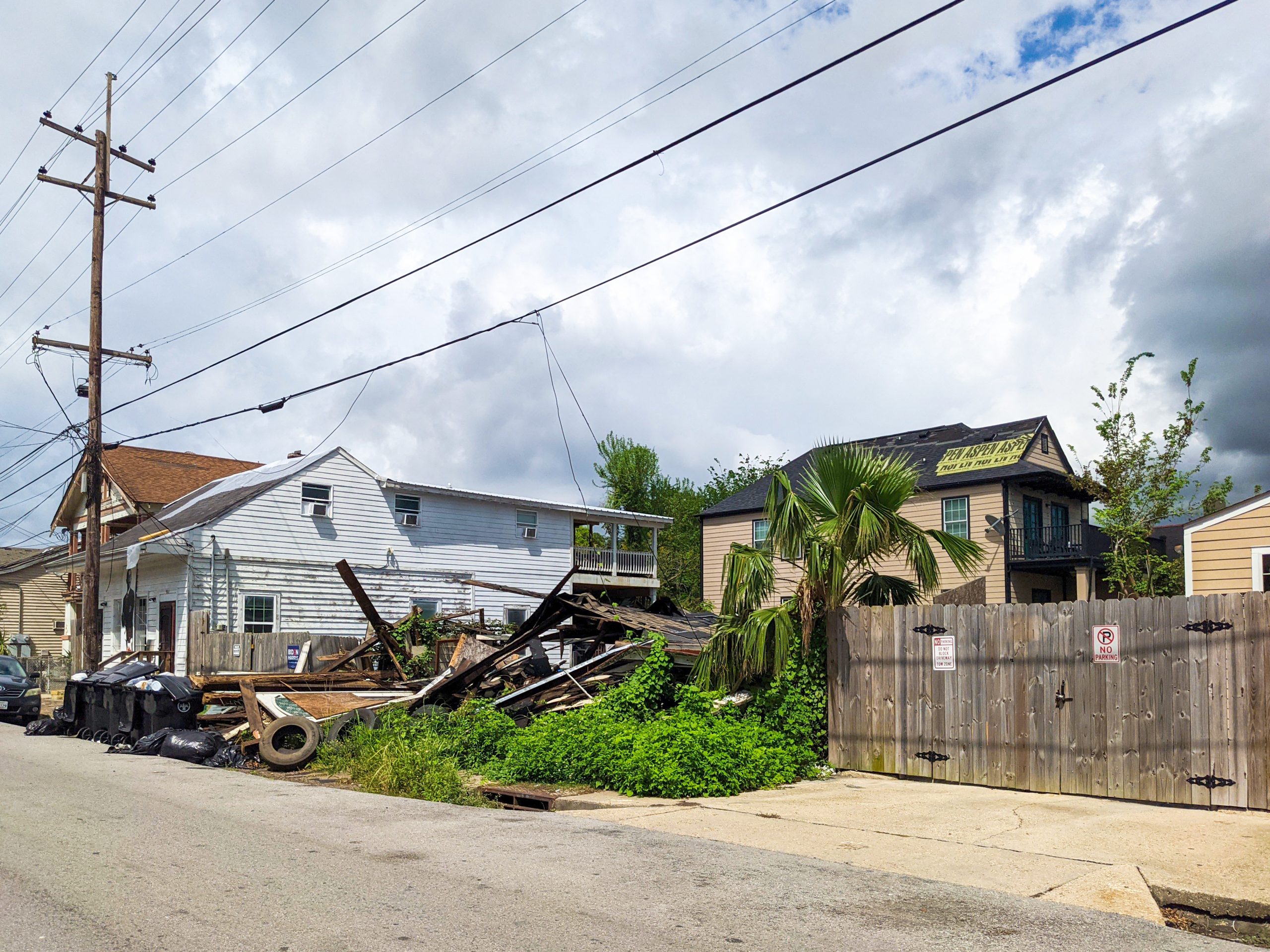This story appeared in the October issue of PRC’s Preservation in Print magazine. Interested in getting more preservation stories like this delivered to your door nine times a year? Become a member of the PRC for a subscription!
Whether they were sitting in their houses watching the 100 mile-per-hour wind gusts continue for hours, or they were watching from their evacuation hotel rooms as news crews covered the storm back home, New Orleans residents spent Aug. 29 witnessing tree limbs falling, roof shingles blowing, and old siding peeling off of buildings. The city took a beating.
Power took over a week to restore, and branches and debris continue to line our streets as I write this in mid-September. But, as we pray for our neighbors to the south, who suffered even more damage than the city — and we solemnly remember the state of our city at this time 16 years ago — we know it could have been so much worse, and we give thanks.
As Hurricane Ida’s winds blew through New Orleans, many buildings that were already unstable succumbed to the incredible gusts. (Click here to take a look at PRC’s efforts to catalog the storm’s damage to historic structures)
One of the saddest symbols of Ida’s destruction was the complete collapse of the Karnofsky Tailor Shop, the landmark brick building on South Rampart Street where a young Louis Armstrong was cared for by the Karnofsky family, starting in 1913. It was one of only four historic buildings on a single block of South Rampart that John Hasse, curator of American Music at the Smithsonian Institution, referenced when he said, “There is probably no other block in America with buildings bearing so much significance to the history of our country’s great art form, jazz.”

LEFT: The Karnofsky Tailor Shop, photographed in February 2021. Photo by Liz Jurey. RIGHT: The Karnofsky Tailor Shop collapsed during Hurricane Ida. Photo courtesy of NOLA Ready.
The PRC was thrilled to accept a preservation easement on the Karnofsky Tailor Shop in December 2018 after the GBX Group acquired the property the year before. After watching that building and others on the block languish for decades, it was thrilling to know that a sympathetic new owner had purchased the site and was committed to honoring its history while executing its full restoration. The building was in incredibly poor shape, and GBX quickly consulted with a top local engineering firm to install bracing in the structure to help protect it from hurricane-force winds.
Sadly, the bracing wasn’t enough. Surrounded by empty lots, the Karnofsky Tailor Shop had nothing to shield it from Ida’s unrelenting strength, and the building was reduced to a pile of historic red bricks.
The scene was quickly broadcast far and wide, with people around the globe lamenting the loss of such a significant site of jazz heritage. It was a tragic symbol of Hurricane Ida’s wrath.
Within days, GBX had the site fenced off and professionally guarded. The company hired a crew to organize all of the fallen bricks onto pallets, and they were transported off site for safekeeping.
What happens next is yet to be determined. But because we hold a preservation easement on the building, PRC will be intimately involved in the decisions going forward. This serves as further proof of the immense power of an easement as the best tool to protect historic structures. Even when destroyed, the easement holder has a say in next steps.
The silver lining is knowing that GBX’s plan for the entire 400 block of South Rampart Street honors its historic architecture, as well as the area’s remarkable history and the neighborhood’s feel. By acquiring other sites on the block, including the Eagle Saloon — on which PRC also holds an easement — and the Little Gem Saloon, as well as a few vacant lots, GBX has crafted a redevelopment plan that restores and celebrates the existing buildings and fills in empty lots with new structures of appropriate style and scale. GBX has tapped into the expertise and vision of Trapolin Peer Architects, a New Orleans-based firm, to work with them on this project.
Officials at GBX also have been working with local musicians, including Dr. Michael White and Troy “Trombone Shorty” Andrews, to advise them on future uses for these newly constructed and newly restored buildings, with the vision that it will honor its jazz legacy.
Hurricane Ida was another big hurdle in an already difficult time. But New Orleanians are focused and strong, and we’ve proven time and again to be up to the biggest challenges. We know this city is irreplaceable.
It’s our mission and passion at PRC to help our residents to rebuild and to help ensure that historic places, like the 400 block of Rampart, honor our history. The PRC Easement Program and PRC’s new Hurricane Relief Fund are working hard to protect our historic places so they will be there for many future generations of New Orleanians to enjoy.
Danielle Del Sol is the Executive Director of the Preservation Resource Center.
Advertisement







